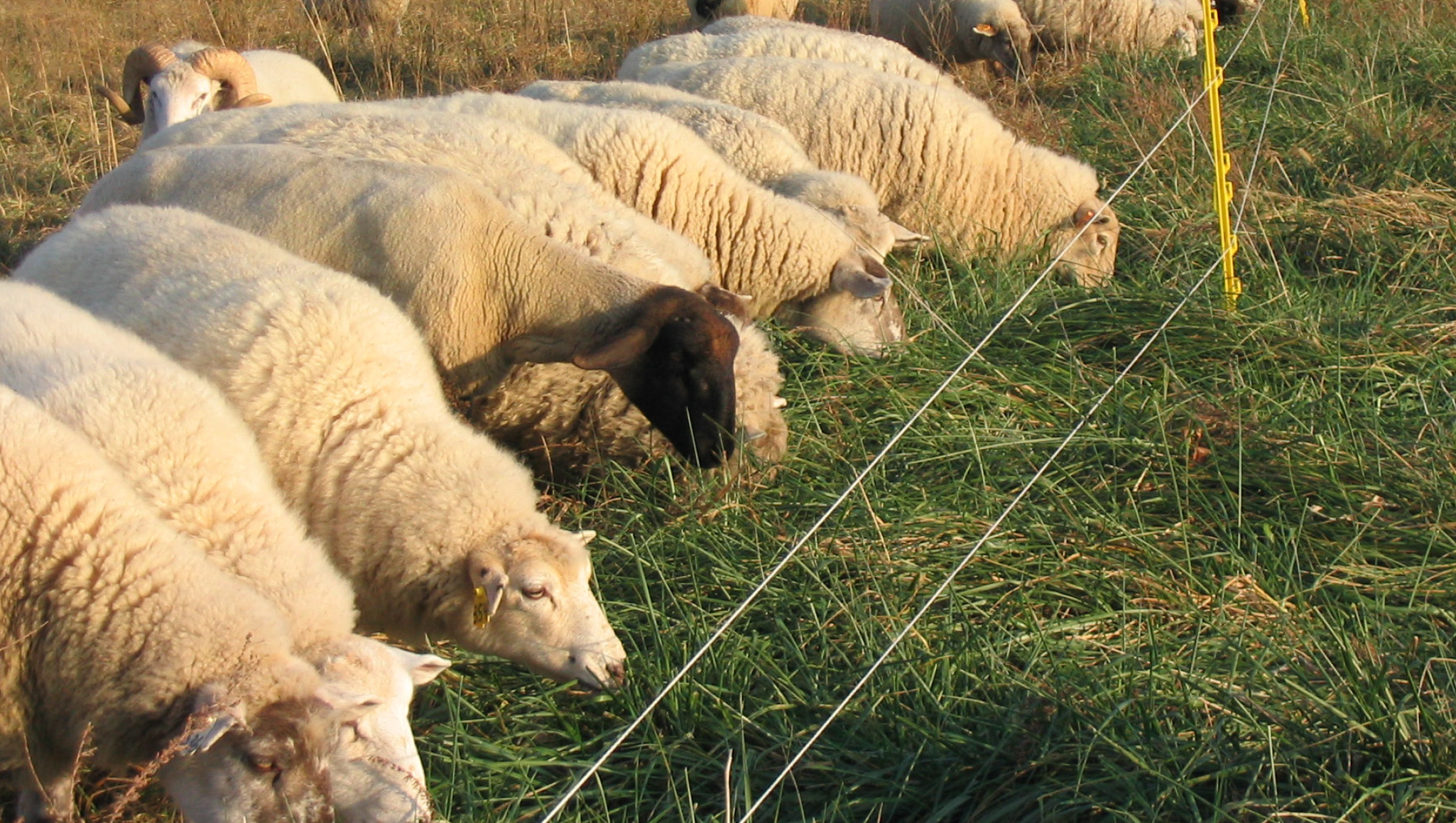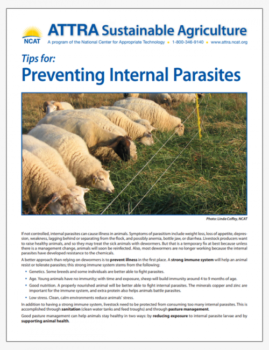Tips for: Preventing Internal Parasites

By Linda Coffey, NCAT Agriculture Specialist
If not controlled, internal parasites can cause illness in animals. Symptoms of parasitism include weight loss, loss of appetite, depression, weakness, lagging behind or separating from the flock, and possibly anemia, bottle jaw, or diarrhea. Livestock producers want to raise healthy animals, and so they may treat the sick animals with dewormers. But that is a temporary fix at best because unless there is a management change, animals will soon be reinfected. Also, most dewormers are no longer working because the internal parasites have developed resistance to the chemicals.
A better approach than relying on dewormers is to prevent illness in the first place. A strong immune system will help an animal resist or tolerate parasites; this strong immune system stems from the following:
- Genetics. Some breeds and some individuals are better able to fight parasites.
- Age. Young animals have no immunity; with time and exposure, sheep will build immunity around 4 to 9 months of age.
- Good nutrition. A properly nourished animal will be better able to fight internal parasites. The minerals copper and zinc are important for the immune system, and extra protein also helps animals battle parasites.
- Low stress. Clean, calm environments reduce animals’ stress.
In addition to having a strong immune system, livestock need to be protected from consuming too many internal parasites. This is accomplished through sanitation (clean water tanks and feed troughs) and through pasture management.
Good pasture management can help animals stay healthy in two ways: by reducing exposure to internal parasite larvae and by supporting animal health.
Numerous strategies can reduce exposure:
- Maintain proper forage height; don’t graze shorter than four inches.
- Maintain proper stocking rate.
- Rest contaminated areas for at least 60 days if possible; longer is better.
- Give access to browse and tall-growing forbs.
- Use resistant animals and alternate grazers (cattle and equines can alternate with sheep or goats).
- Provide clean pastures for young and other susceptible stock, such as lactating animals.
- Graze animals on regrowth from silage or hay crops.
- Use annual forage crops, such as rye, turnips, or chicory (cool season) and sunn hemp, cowpeas, sorghum, or soybeans (warm season).
- Rotate animals away from larvae before they are infective, which means within four days during optimum parasite conditions, such as during a humid summer.
- Keep animals out of wet areas.
Several strategies provide support:
- Provide excellent nutrition, especially energy, protein, and minerals, to susceptible classes and during stressful times.
- Allow limited exposure to parasite larvae to maintain immune response.
- Provide diverse forages, such as browse, tannin-containing forages such as sericea lespedeza, and a wide variety of plants to encourage animals to eat more and give some medicinal benefits.
Summary
Three actions help prevent illness:
- Encouraging a strong immune system
- Using good sanitation
- Rotating pastures
Further Resources
Tools for Managing Internal Parasites in Small Ruminants: Pasture Management, ATTRA publication.
Provides a full discussion of pasture management and the interaction between animals and internal parasites. This publication includes three assessment sheets: pasture, livestock nutrition, and internal parasite management. These assessment sheets can help producers refine their management and improve the health of pastures and animals.
American Consortium for Small Ruminant Parasite Control
Website offers a collection of resources to help manage internal parasites in sheep and goats.
Langston University
Offers a Web-based training manual. Some chapters are especially noteworthy:
Chapter 7: Internal and External Parasite Management
Chapter 10: Introduction to Goat Nutrition
Chapter 11: Pastures for Goats
Tips for: Preventing Internal Parasites
By Linda Coffey, NCAT Livestock Specialist
Published April 2015
©NCAT
IP500
Slot 513
This publication is produced by the National Center for Appropriate Technology through the ATTRA Sustainable Agriculture program, under a cooperative agreement with USDA Rural Development. This publication was also made possible in part by funding from the USDA, NIFA Organic Research and Education Initiative, project 2010-51300-21641. ATTRA.NCAT.ORG.


